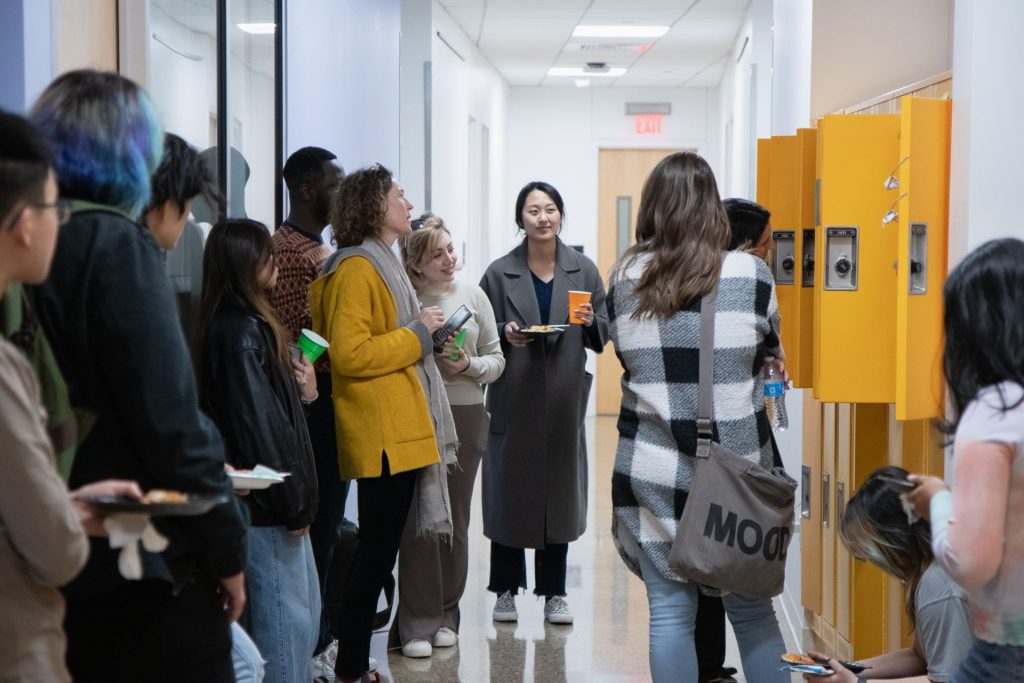
Twenty students of various disciplines explored themes of isolation and belonging through artistic projects by installing their artworks in lockers for the 2024 ATEC Pop-up Locker Exhibition.
This annual tradition of The Harry W. Bass Jr. School of Arts, Humanities, and Technology at The University of Texas at Dallas invites artists from all levels and educational backgrounds to showcase their creativity in one or more 9.25 by 9.25 by 32.5 inch lockers.
Professor xtine burrough organizes this yearly competition as part of the course “Collegium V Honors Readings – Pop-up Exhibition Design (HONS 3199),” which invites honors students to curate an exhibition with a specific theme that changes every year, create site-specific art for the lockers, judge the exhibit entrees, and create material that documents the exhibition. The course serves as an exploration of contemporary interdisciplinary topics in the sciences, social sciences, humanities, and engineering, according to the UT Dallas coursebook.
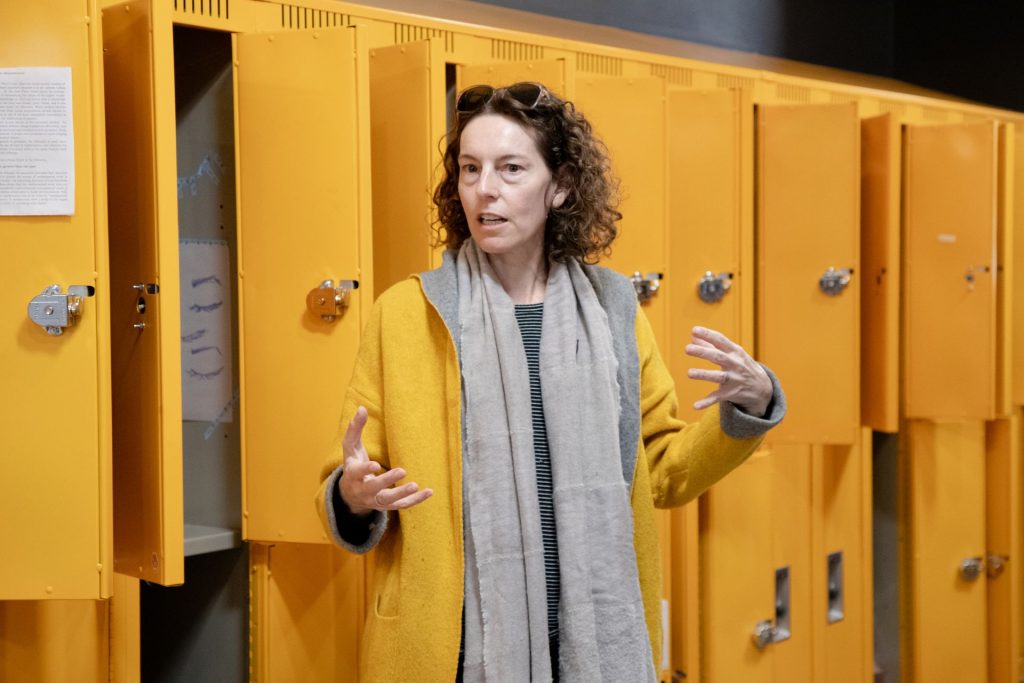
“In this class, we learn about the behind-the-scenes work that goes into pitching and hosting an exhibit, as well as the process of designing and creating a piece for the exhibition itself and the catalog that accompanies it,” said Chloe Tee, a student in HONS 3199 who is majoring in neuroscience and minoring in visual arts. “I am pleased to be contributing to such an interesting project; as someone whose main focus in school has been STEM for the last ten years, I haven’t had many opportunities to display what I’ve created to others.”
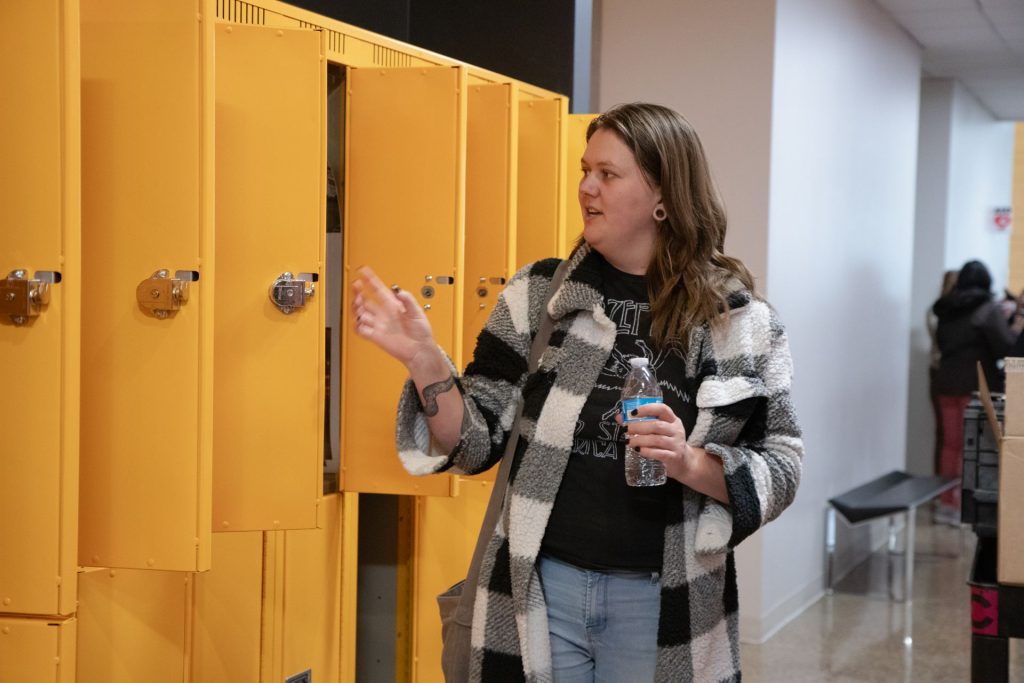

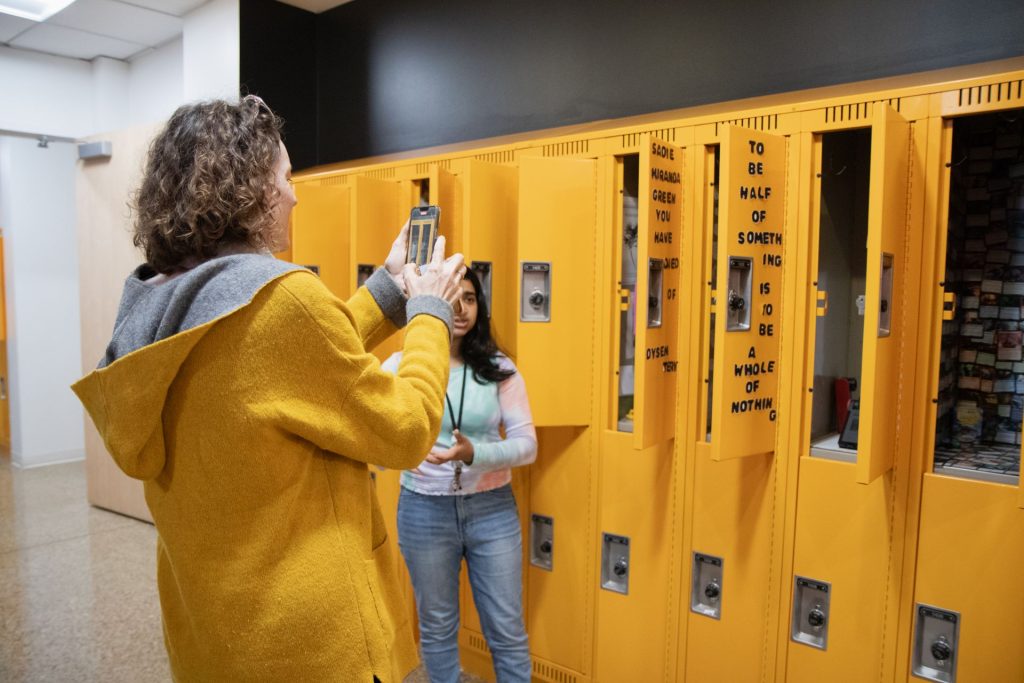
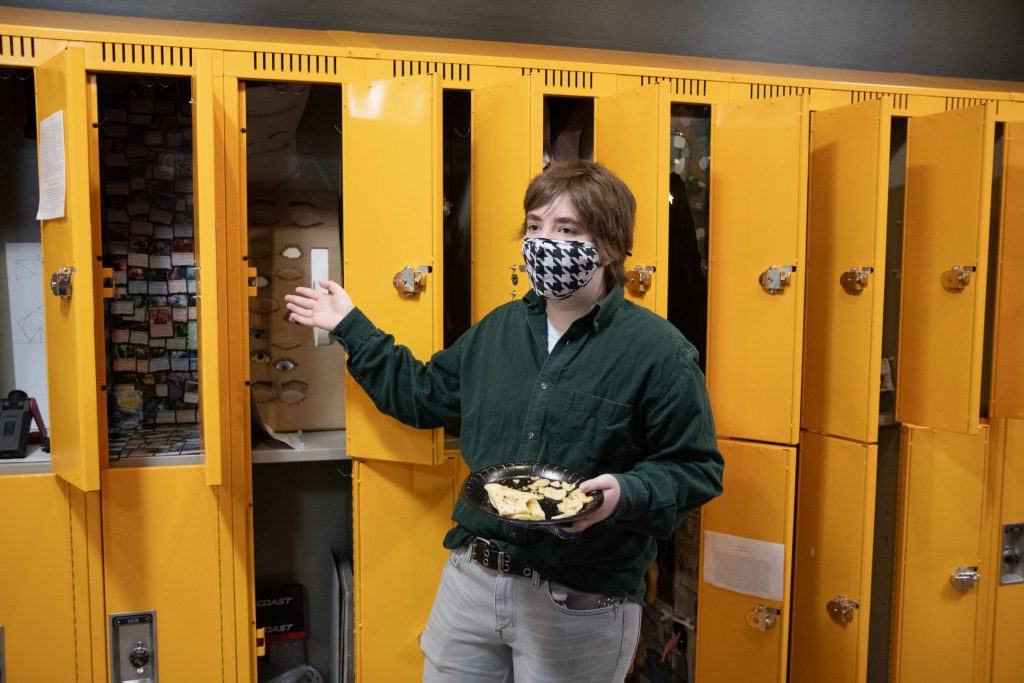
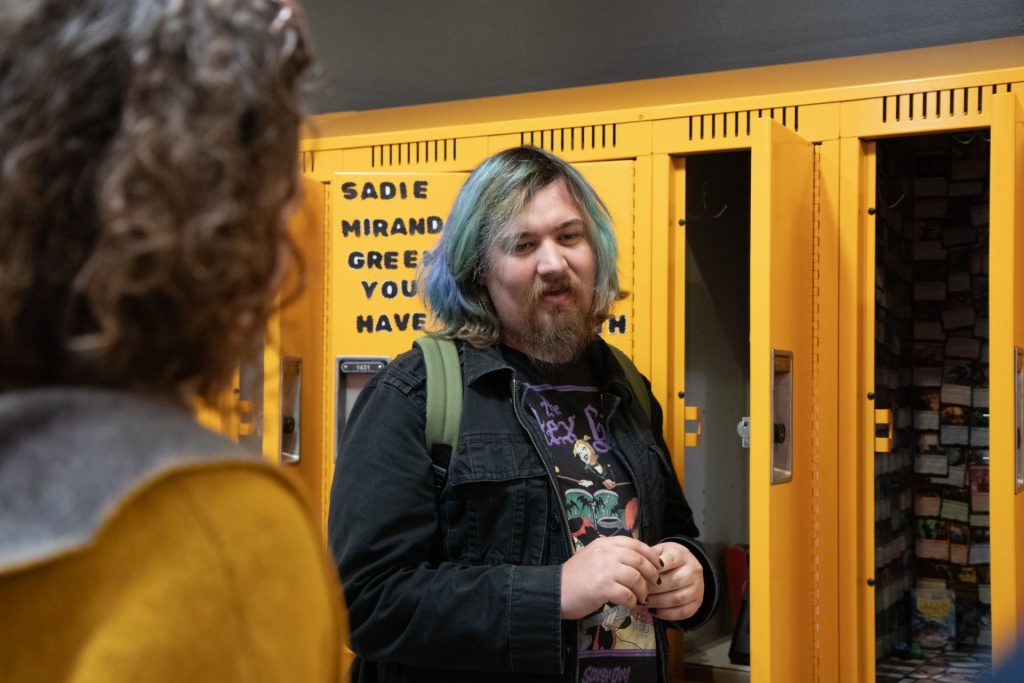
Around the middle of the Spring semester, the class organizes an unveiling where all the work is displayed and invites contributors to show their work. Judges look at each locker and choose a winner. The school immortalizes the lockers of each year’s winners by sealing their locker in plexiglass, which becomes part of the permanent exhibition.
“The paradox of the Pop-up Exhibition is that over time this set of lockers will transform a space of inclusive, temporary creativity into a permanent collection of works made by students who left traces of their livelihoods in the architecture of the Edith O’Donnell building,” burrough said.
Each year, the exhibition revolves around a specific theme inspired by a book burrough selects from the books given to students and faculty associated with the Honors College at the National Merit Book Party. The 2024 ATEC Pop-up Locker Exhibition drew inspiration from the themes presented in Gabrielle Zevin’s New York Times best-seller Tomorrow, and Tomorrow, and Tomorrow, which the class read together in January.
Zevin’s story jumps around time, bridging the 20th and 21st centuries while following two friends as they navigate their shifting relationships with each other and with themselves. The artworks in this exhibition explored ideas of belonging, isolation, and being seen.
“What is it like to be made invisible through societal expectations and personal struggles, hidden from the light of recognition and understanding?” the entry form stated. “How does that play with denying the light of recognition and understanding to others? In a world of darkness, who has the responsibility to light the first torch? What defines identity, connection, and belonging in a community? “
The Bass School communications team spoke with four participants who shared information about their work during the 2024 ATEC Pop-up Locker Exhibition opening on March 20.

“Am I Ugly” by Rebecca Jinxiu Han
Rebecca Jinxiu Han, a first-year PhD student majoring in Arts, Technology, and Emerging Communications (ATEC), created an exhibition centered on the self-editing tendencies she observed in posting social media selfies and how those tendencies impact an individual’s self-acceptance.
“My project delves into the complexities of self-presentation on social media, revealing how individuals navigate between visibility and invisibility in crafting their online identities,” Han said. “By questioning societal norms and ideals of beauty through the lens of self-exhibition on social media, my exhibit contributes to a deeper understanding of how individuals seek validation and belonging in social media.”
For the project, she used glossy stock paper to print posters, collages, comics, and introductions. Additionally, she incorporated painted acrylic plastics and mirror paper for decorative elements. As part of the exhibition, she also featured a plastic 3D-printed figure facing a mirror.
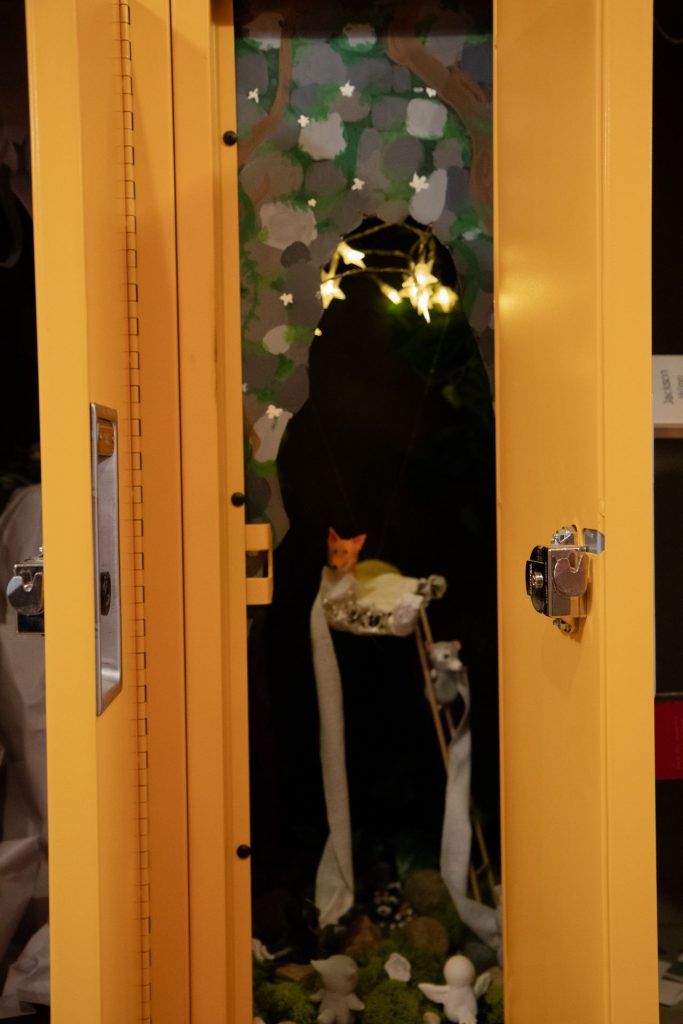
“Patches of Sanctuary” by Chloe Tee and Kavi
Neuroscience senior Chloe Tee partnered with her friend Kavi to produce a work that reflects the themes of visibility and belonging.
“As a person of color who grew up in predominantly white areas, we tended to feel a strong disconnect from the people around us, both culturally and socially,” she said. “However, as queer people, we were then able to find a community with others who felt as if they were different or were ostracized for their identities.”
They produced the background by cutting and painting a black poster board. Then, they built a tree with butcher paper, used fake moss and vines, and scattered rocks. Chloe and Kavi used air-dry modeling clay to make small animal figures and painted them with acrylic. The hand is a plaster model with some bead wire and gauze.
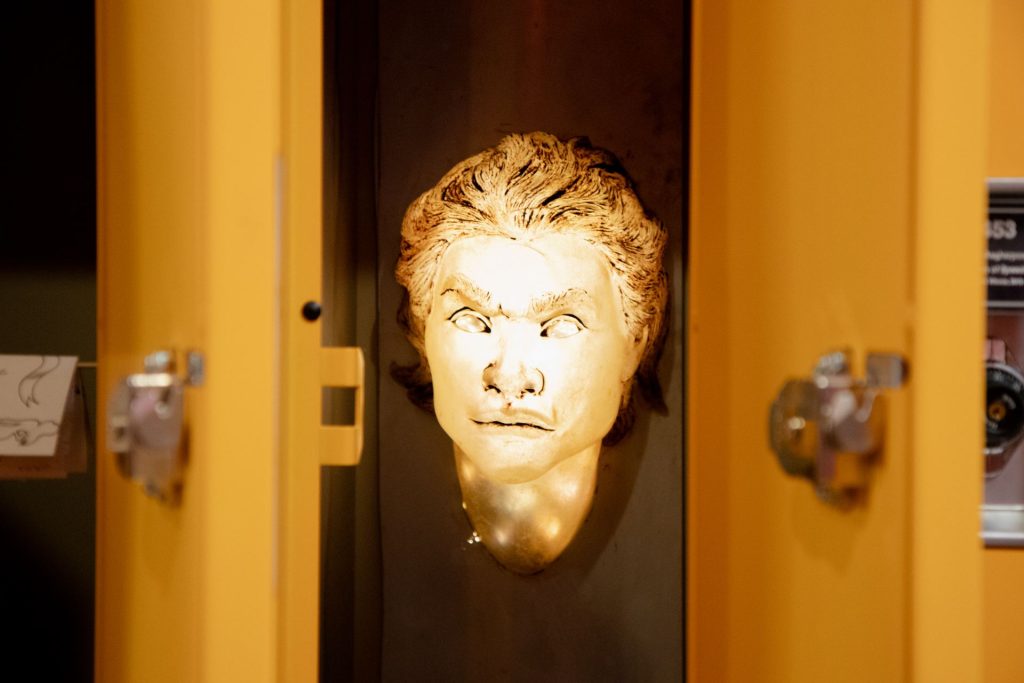
“Votive” by Holly Havens
ATEC junior Holly Havens’ locker was part of a series of works exploring the loss of her religion and the struggles that come with that.
She sculpted a head out of clay and made a silicone mold of it, which she then cast in resin. Then, she added motion-controlled LEDs to the back of the plexiglass it is mounted on. Havens painted the plexiglass grayish silver to help reflect the light throughout the locker.
“I am a person who has struggled with their religion,” Havens said. “Growing up between a small town and Dallas has made it difficult to explore those parts of myself. In my exhibit, I would like to show my support for the quiet strength that comes from being told to be silent and the growth that comes from accepting yourself and exploring your own beliefs in adulthood.”

“Connection” by Amulya Prasad Rayabhagi
A project by Computer Science Sophomore Amulya Prasad Rayabhagi represents the two main characters in Tomorrow, and Tomorrow, and Tomorrow: Sam and Sadie, showing the contrast between the two characters and the game that they designed.
Rayabhagi used newspapers, pebbles, phone receivers, and books to represent each locker. The phone receiver on both lockers represents the distant yet existing connection between the friends. Similarly, exactly 16 pebbles represent how many years had passed before they decided to talk to each other again. Lastly, the books and papers represent how each of their personalities is represented in the novel.
“My locker uses the friendship between the main characters and how it evolves,” she said. “My locker contains a piece of yarn that’s been crocheted but left incomplete. The crochet shows that their friendship is unique and special, but it shows that the thread can be easily taken apart because their friendship is fragile. However, there is a knot at the end even after the thread is no longer intertwined, which shows that their bond remains.”